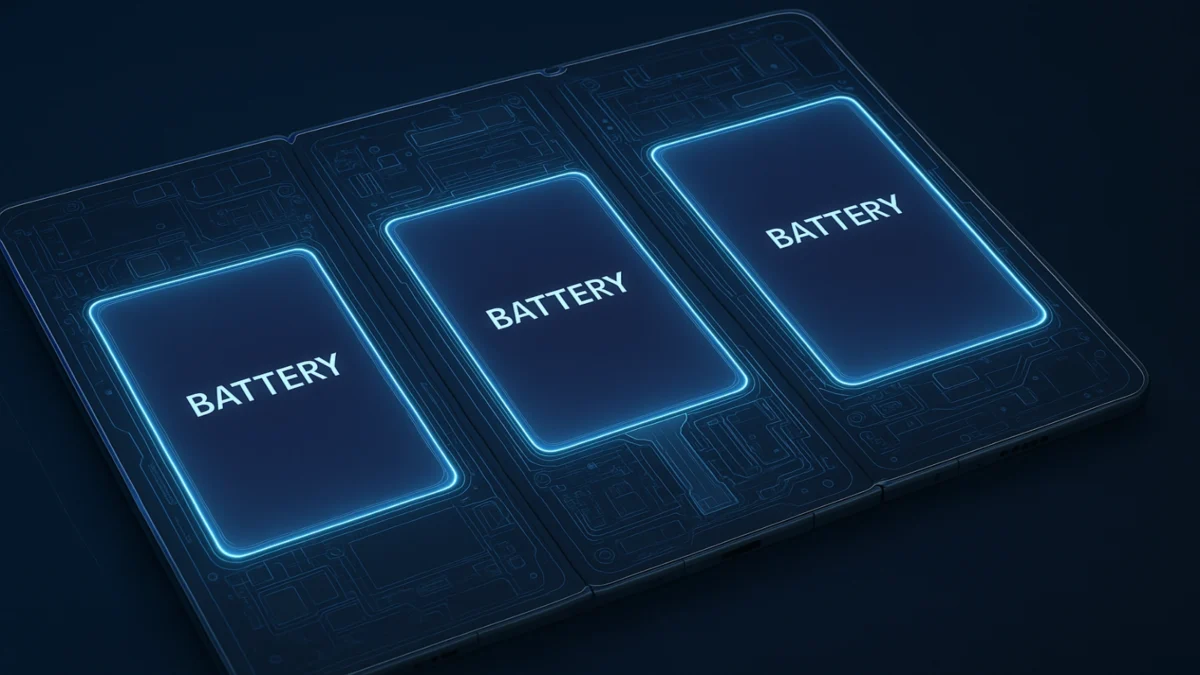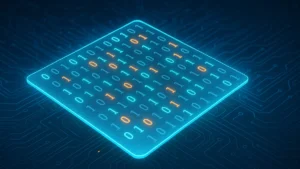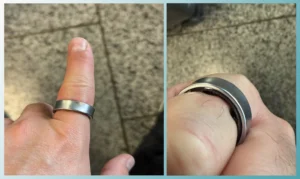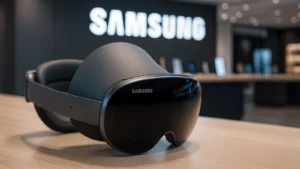Samsung might be cooking up something wild for its next foldable. Leaks and patent filings suggest the Galaxy Z TriFold — yes, a phone that folds twice — could come with three separate batteries tucked inside each segment.
At first glance, that sounds like a small detail. But if you think about it, it’s actually a pretty big deal. Three batteries mean more power, more complexity, and a whole lot of engineering magic to make it all work together.
What the Leaks Are Telling Us
According to reports spotted by SamMobile and SammyGuru, Samsung’s upcoming TriFold design splits the phone into three distinct sections. Each one has its own battery pack — the center section being the biggest, while the camera side houses the smallest.
Insiders at SammyFans claim the total capacity could top 5,000 mAh, which would beat the Galaxy Z Fold 7’s 4,400 mAh setup. That’s impressive for a device that bends in two places.
What’s even more interesting: patent sketches hint at a vapor chamber or heat spreader running through the middle panel, likely to help dissipate warmth during fast charging or extended gaming sessions (Wccftech picked up on this too). And because of the TriFold’s “G-shape” hinge — two inward folds instead of one — the wiring and battery connections will need to bend thousands of times without wearing out. No small feat.
Why It’s a Tricky Design
Now, imagine trying to charge three batteries that aren’t identical — it’s like filling three cups of different sizes from the same tap. Some fill up faster, others lag behind, and you don’t want any to overflow.
That’s the challenge here. Samsung’s engineers have to manage charging, power flow, and temperature across three independent cells. One solution could be giving each section its own power-management chip, so every battery regulates itself and stays balanced with the rest.
They might also use circuits that shuffle energy between cells when needed — sort of like sharing charge to keep everything level. And because fast charging creates heat, materials like graphene layers or vapor chambers could help spread that warmth evenly so one side doesn’t get hotter than the other.
How Samsung Could Pull It Off
If we connect the dots from previous foldable designs, Samsung might build a shared “charge bus” — a central line that distributes incoming power to all three modules. Each battery would handle its own safety checks and voltage limits, while a master controller oversees the whole system.
Behind the scenes, software could track how often each panel is used and adjust power flow to reduce wear. For example, if you mostly use the center display, the system might lean on the side batteries more to balance the aging process.
The power lines running through the hinges would likely be flexible printed circuits (FPCs) — thin, layered connectors that bend without cracking. They’d also carry tiny data signals so the phone can monitor temperature and voltage in real time.
The Trade-Offs and Payoff
Packing three batteries into one foldable isn’t just a wiring puzzle. It adds weight, cost, and heat — three things phone designers hate. More components mean more points of failure, and all those safety layers can nibble away at efficiency.
But if Samsung nails it, the payoff could be huge: longer battery life, better cooling, and more consistent performance even under heavy use. It could also give the TriFold a real edge over other foldables that struggle to balance size and endurance.
The Bottom Line
A triple-battery system sounds ambitious — maybe even risky — but it’s also the kind of innovation that keeps Samsung ahead in the foldable race. If the TriFold launches as rumored, we’re not just getting a new way to fold a phone. We’re getting a glimpse at how future devices might rethink power from the inside out.
Written by Paul — a mobile tech analyst who covers Samsung innovations, battery tech, and the evolving world of foldable design. Alex writes about the engineering choices that shape how our devices actually feel to use.
Last Updated on October 18, 2025 by Lucy




